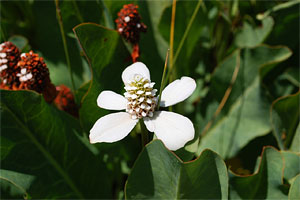 The water flowing past Big Break Regional Shoreline through the Sacramento and San Joaquin Rivers drains half of California's watershed, and creates the largest estuarine environment on Pacific shores.For our latest Science Hike, we visited Big Break Regional Shoreline in Oakley, California. This area is often referred to as the "Inland Coast." However, wishful thinking aside, the name Big Break has little to do with roaring surf. The name "Big Break" hearkens back to a levee failure in 1928, which allowed the San Joaquin River to reintroduce itself to part of its former range - right over an asparagus farm.
The water flowing past Big Break Regional Shoreline through the Sacramento and San Joaquin Rivers drains half of California's watershed, and creates the largest estuarine environment on Pacific shores.For our latest Science Hike, we visited Big Break Regional Shoreline in Oakley, California. This area is often referred to as the "Inland Coast." However, wishful thinking aside, the name Big Break has little to do with roaring surf. The name "Big Break" hearkens back to a levee failure in 1928, which allowed the San Joaquin River to reintroduce itself to part of its former range - right over an asparagus farm.
We once again enlisted the help of our colleagues at the East Bay Regional Parks District on this feature. They've collaborated with us twice before, on science hikes in Briones Regional Park and Sibley Volcanic Regional Preserve.
We were welcomed at the gate by EBRPD Naturalist Mike Moran. Normally, we'd have rolled right on in to the parking lot, but the district has closed the parking area temporarily as part of a significant renovation, to include new trails and interpretive facilities. The lot should reopen sometime in November of this year (2010). Check the EBRPD website for closure updates if you are planning a visit. That said, don't be discouraged by the locked gate, even without the lot, the shoreline is still accessible through the foot path to the right of the main entrance.
Before we'd even unpacked our gear, Mike pointed out some raptors on the horizon, perhaps a quarter mile away. Some careful spotting through the binoculars revealed they were likely a pair of Swainson's Hawks. To my untrained eye, it might have appeared they were juvenile Red-tailed Hawks, but the different markings on the underside of the wings (e.g. lack of the black bars on the leading edge), plus the overall narrower profile of the wings themselves indicate otherwise. I've learned not to rely on the presence of a red tail, but Mike's keen eye helped me add this majestic buteo to my life list. What a way to start the day.
